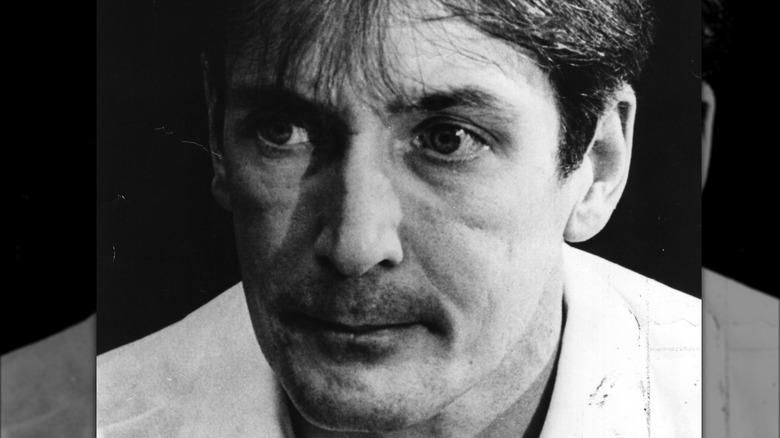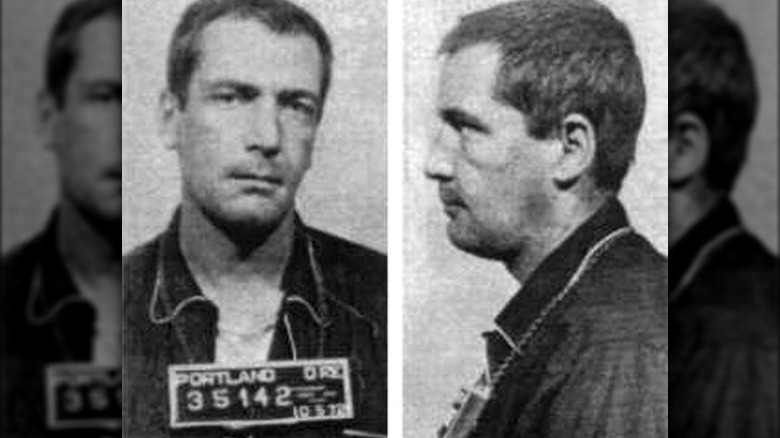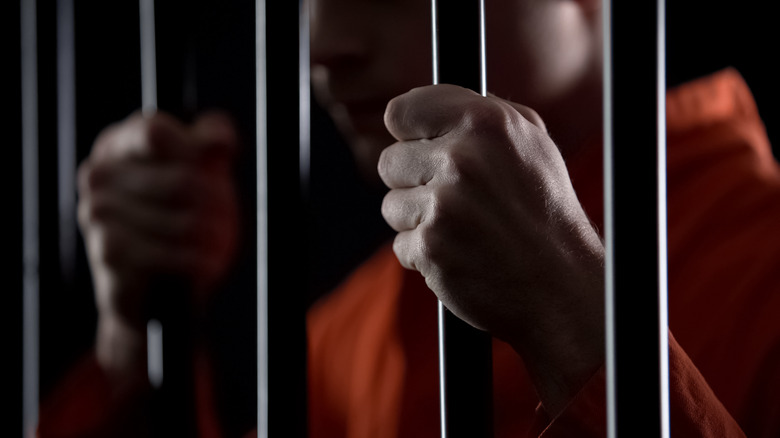Why Gary Gilmore Chose To Be Executed By Firing Squad
According to the Death Penalty Information Center, the primary method of execution for inmates on death row is lethal injection. However, three states, including Utah, Oklahoma, and Mississippi, have the option of death by firing squad (via Vice). Time reports that in 1976, Utah inmate Gary Gilmore chose to die in this manner. Britannica writes that Gilmore, born in 1940, was a brilliant individual with a knack for art. Crime & Investigation UK explains that despite his bright mind, his childhood was complicated and tumultuous. In his youth, he was abused by his father. Gilmore then went on to commit a number of petty and violent crimes.
Per The Guardian, Gilmore only lived to be 36 but was jailed for 18 of those years. In 1976, his life seemed to change for the better when he was released from prison and sent to live with family in Utah (via Biography). Gilmore had been locked up for years for an armed robbery charge (per A&E). His path to redemption, however, did not last. Shortly after his release, Gilmore walked into a gas station and killed 24-year-old employee Max Jensen. The next night, he killed Bennie Bushnell, a manager at a motel. Both of his victims were students at Brigham Young University, and although they complied with Gilmore's demands, he shot them in the head. He later said he had no motive for the killings.
He accepted his fate
Biography explains that during Bushnell's murder, Gilmore accidentally shot himself in the hand. Per Crime & Investigation UK, a mechanic working on Gilmore's truck saw the injury, thought it was suspicious, and then called the police. Gilmore called a family member to help him with his injury but instead, they turned him in. Their efforts led to Gilmore's swift arrest and he quickly admitted to the murders. According to A&E, Gilmore did not originally want a trial and intended to plead guilty. Nonetheless, a trial ensued and in 1976, Gilmore was convicted of murder and sentenced to death. He was given the option to die by hanging or firing squad.
Gilmore chose the latter because he believed it was a "dignified" way to go (via A&E). Forensic psychologist Joni Johnston also notes that having the opportunity to choose his means of execution provided Gilmore with a sense of "control." ABC4 Utah reports that Gilmore was set on dying. At a pardons hearing, he stated, "I've simply accepted the sentence that was given to me." Gilmore added, "I've accepted sentences all of my life." Even so, his mother did not want him to die. His lawyers also attempted to appeal this decision.
However, Gilmore reportedly hated prison and attempted to kill himself multiple times (via Time). He and his girlfriend, Nicole Baker Barrett, took an overdose of sleeping pills. Both survived (per UPI). Britannica states that Gilmore also attempted to starve himself, to no avail.
Gary Gilmore's final moments
On January 17, 1977, 36-year-old Gary Gilmore was executed at Utah State Prison (per Time). According to ABC4 Utah, the ACLU made a futile attempt to prevent his death. Nevertheless, the execution went on as planned. The Guardian reports that Gilmore was hooded and a target was placed over his heart. Previously, he had asked to not be hooded but his request was denied. Gilmore was then strapped to a chair and five riflemen proceeded to shoot him four times in the heart — one of the rifles was loaded with a blank cartridge, so that the executioners wouldn't know for certain which one had contributed to Gilmore's death. His last words were "Let's do it." With this, Gilmore became the first person to be executed in the U.S since 1968 (via Constitutional Rights Foundation).
History explains that in 1972, the Supreme Court ruled that the death penalty violates the 8th Amendment of the Constitution. But by 1976, the death penalty was reinstated when it was discovered that a majority of Americans supported capital punishment. This makes Gilmore's execution significant in more ways than one; his willingness to die only added to the appeal of his story (via Time).
Crime & Investigation UK writes that Gilmore was cremated and his ashes were scattered across Utah. He requested to donate his corneas and other organs for use as transplants. One of Gilmore's final visitors was his uncle Vern Damico. Damico, per ABC4 Utah, stated, "It was very upsetting to me but he got his wish." He added, "But he did die and he died in dignity."


